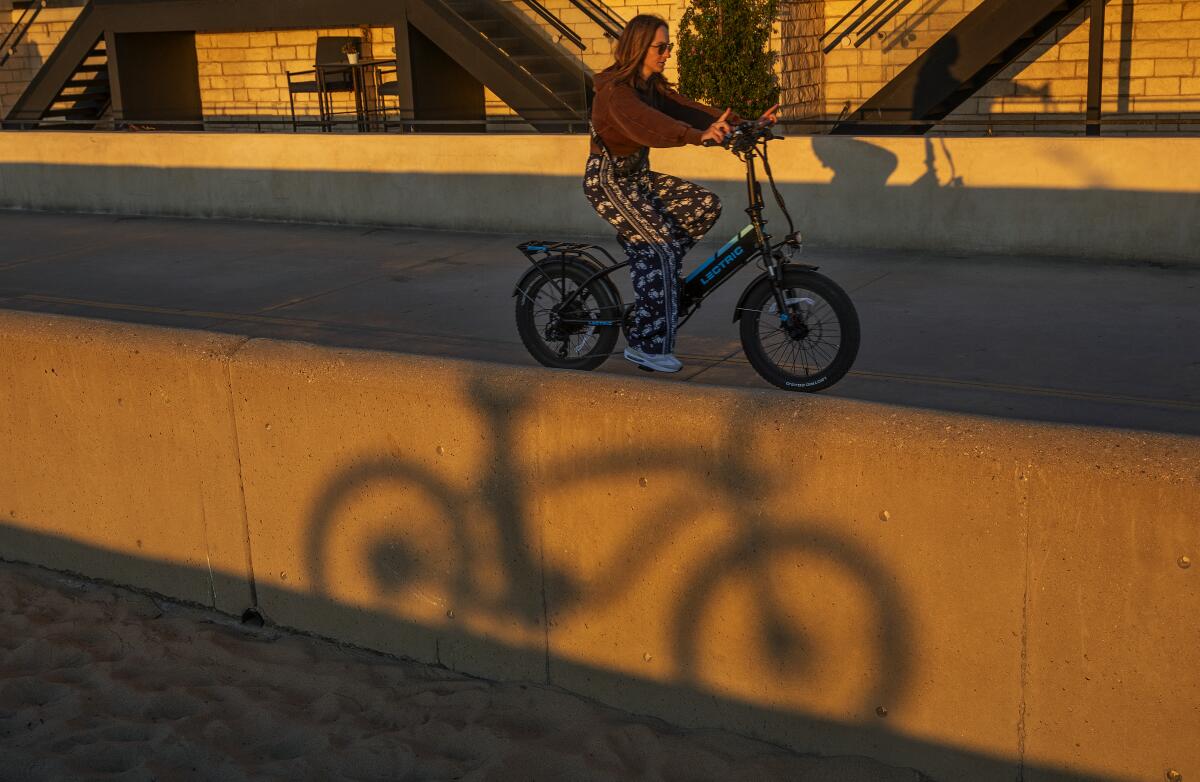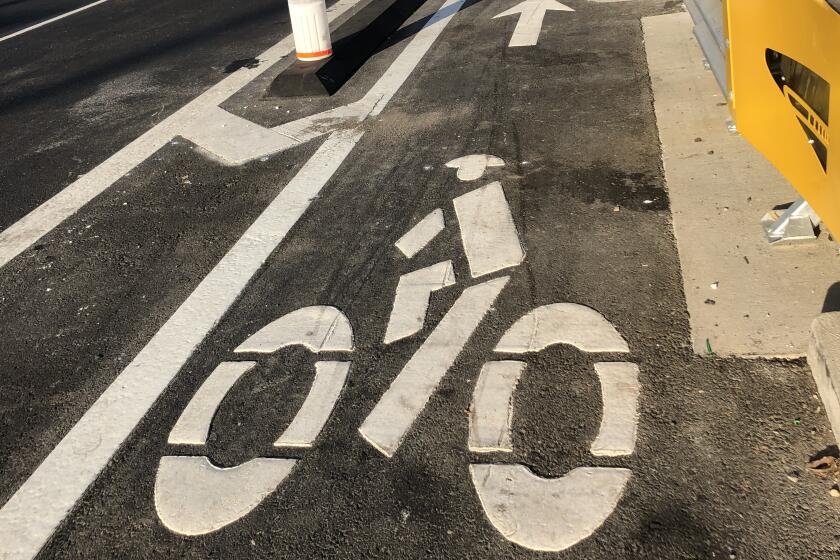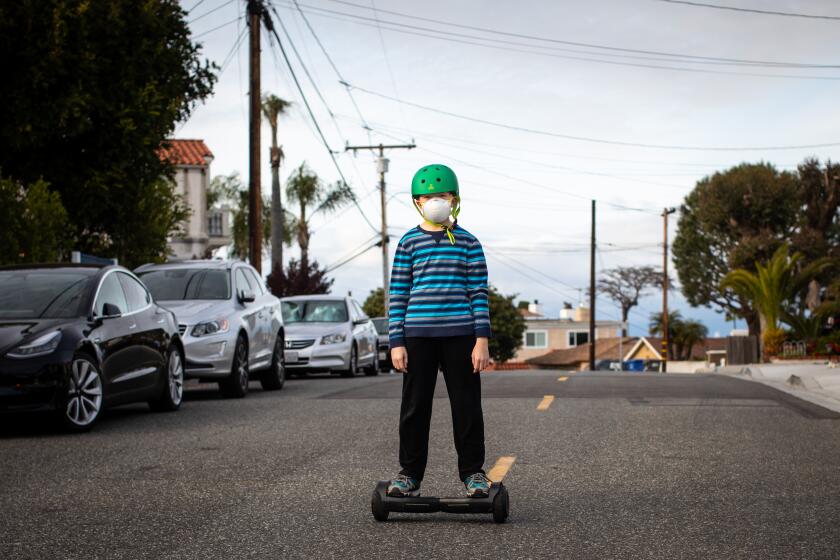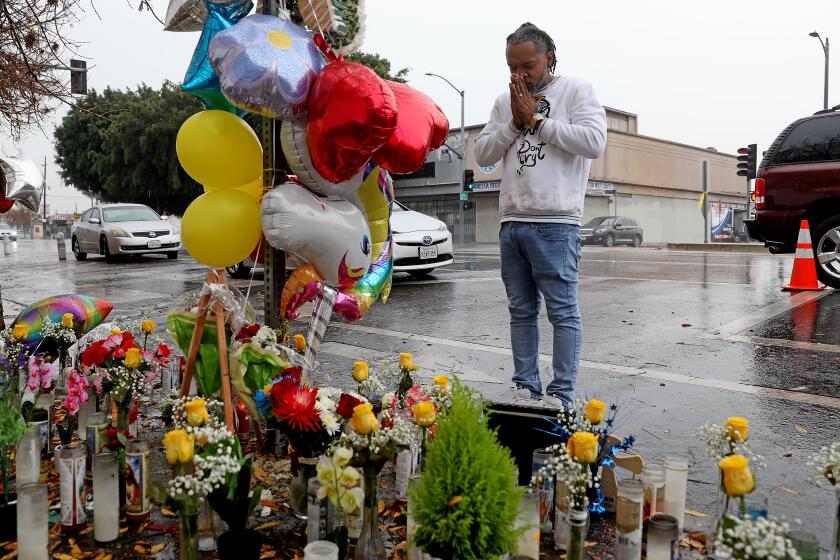Biking in L.A. is fun. Now let’s make it safe

- Share via
The campaign to pass Measure HLA — an initiative that would force Los Angeles to implement its own adopted street safety plan much faster than the current 160-year pace — paints a grim picture of biking and walking in the city. And rightly so: More people died in city traffic in 2023 than in any of the last 20-plus years, and most of the 336 deaths were pedestrians.
I’ve experienced the worsening situation as a cyclist in L.A. for almost 20 years. The growing size and power of cars and the evident impatience of motorists have exposed the city’s halfhearted attempts at improving biking infrastructure as transportation tokenism.
With safe, protected bike lanes and streets designed for humans, not only cars, we can have a future with an environmentally sound commuting option.
To understand how unnerving it is out there for cyclists, I might suggest you saddle up and pedal in a gutter bike lane during rush hour. But I could never recommend doing that.
Still, none of this should obscure a simple truth about cycling: It’s fun. A lot of fun. If I were leading the campaign to pass Measure HLA, the slogan would be, “Make L.A. fun again.”
Vehicle sizes have ballooned in recent decades, and now children would be unsafe on bikes. History shows us a better approach.
It’s too bad Angelenos of every kind — old and young, those with and without disabilities — are scared off their streets unless they’re in a car. The improvements Measure HLA seeks for hundreds of miles of city roads — protected bikeways, buffered bike lanes and better sidewalks, to name a few — would make our streets inviting and fun to more than just hardened cyclists like me.
And by fun, I mean not only childlike exuberance but also the kind of soul-enriching experiences uncommon in car commuting.
The ballot measure would force L.A.’s leaders to enact their own visionary Mobility Plan, which aims to make the city’s car-dominated streets safer for pedestrians, bicyclists and transit users.
Take my electric bike ride to work. My commute from home in Alhambra to The Times’ newsroom in El Segundo covers 23 miles, a distance that traverses bustling urban centers and historic neighborhoods, all in a single morning.
If the coffee smells good coming from a shop, I stop and buy a cup. If a new sight captures my attention — like the space shuttle standing upright at the California Science Center — I pull over, gawk and snap a photo. Every pedestrian in a crosswalk gets a “good morning.”
I also talk to my mom, who died last year. She worked as a nurse at L.A. General Medical Center in Boyle Heights until the day she collapsed from brain lymphoma. “I miss you, Mom, all the time,” I say when passing her hospital.
Most embarrassingly, I sing — off-key and often with made-up lyrics. My apologies to the students and faculty at St. Cecilia Elementary south of USC, who have surely noticed someone singing Simon and Garfunkel right around the time school starts.
I have a few originals too; perhaps Schoolhouse Rock could borrow my paean to patient driving: “You look great, dum dum da-dum, when you wait, dum dum da-dum.”
Singing serves a safety purpose. I’ve found that not only being highly visible helps, but so does being noisy, and in a very particular way.
The din of city life comes mostly from machines — gas-burning engines, tires rolling on pavement and sirens from emergency vehicles. The sound of discernible human voices is so rare on rush-hour streets that singing joyfully cuts through the noise and gets attention. Whatever works!
Safety tricks like that aren’t enough to lure new, vulnerable riders — such as children, the elderly and the “cycling curious” — out of cars and onto a bike. The personal joy I experience on these streets isn’t the answer people are looking for when they ask about my bike commute, “But is it safe?”
These people need to see real infrastructure, common in many other cities, that offers them a measure of safety by separating them from vehicle traffic. Painted bike lanes on busy roads just invite them to take a risk. It’s not unreasonable for people to reject the most climate-friendly form of transportation if it could cost them their lives or limbs.
If voters pass Measure HLA on March 5, there could be a day when the joy of cycling in L.A. is enough to lure more people onto bikes. Because all that new infrastructure would finally answer the question, “But is it safe?”
More to Read
A cure for the common opinion
Get thought-provoking perspectives with our weekly newsletter.
You may occasionally receive promotional content from the Los Angeles Times.












